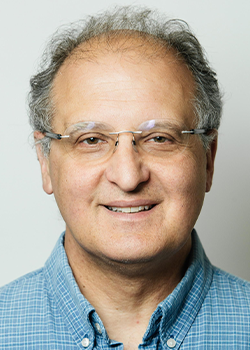
Hereditary hemorrhagic telangiectasia (HHT) is an inherited disorder in the blood vessels that can lead to a range of complications, including bleeding disorders and abnormal vascular structures in various organs. It affects about one in 5,000 people. Currently, treatment options for HHT are limited and don’t address the cause of the disease.
A new study led by a Duke graduate student points the way toward strategies for developing more targeted and effective treatments for patients suffering from HHT, which can cause serious, even life-threatening, bleeding.
Evon DeBose-Scarlett, a graduate student in the lab of Doug Marchuk, PhD, James B. Duke Distinguished Professor of Molecular Genetics and Microbiology, is the lead author on a study published in the American Journal of Human Genetics that sheds light on the genetic causes behind the vascular malfornations that are seen in HHT.

Patients with HHT have blood vessels that do not develop correctly, which creates fragile, abnormal connections between arteries and veins known as arteriovenous malformations (AVMs). These malformations, also called lesions, can occur anywhere in the body, but are most common in the skin, liver, lungs, and brain.
The team examined malformations from multiple patients, and in many of the lesions they studied, they found two mutations, or “hits”– a germline hit, which is inherited and found in every cell, and a second somatic hit, which was specific to a particular tissue. “This concept mirrors what we see in cancer,” DeBose-Scarlett said. “You might inherit one defective gene, but a second mutation is required for the disease to manifest in specific tissues.
Currently, treatment options for HHT are limited. Lesions on the skin or in accessible areas of the body can be surgically removed. Lesions in the nose can be managed with chemicals or lasers, but these treatments don’t address the underlying causes of the disease, and internal malformations, particularly in organs like the liver and lungs, not only present more significant challenges, but also can be harder to find and diagnose.
A better understanding of this two hit genetic mutation could open the door to new therapeutic possibilities. “By understanding the genetic basis, we may be able to develop treatments that prevent the second hit from occurring,” DeBose-Scarlett said, “or we could address the consequences of these mutations.” Potential therapies could involve gene-editing technologies, such as CRISPR, or drugs targeting specific signaling pathways disrupted by the loss of both gene copies.
"There's a growing body of evidence suggesting that most vascular malformations have a genetic origin," DeBose-Scarlett said. "This work contributes to a larger understanding of how these malformations develop and reinforces the idea that genetics play a key role in their formation."
The team will now shift their focus to identifying additional genetic drivers of these malformations, particularly in cases where lesions grow aggressively or become particularly dangerous.